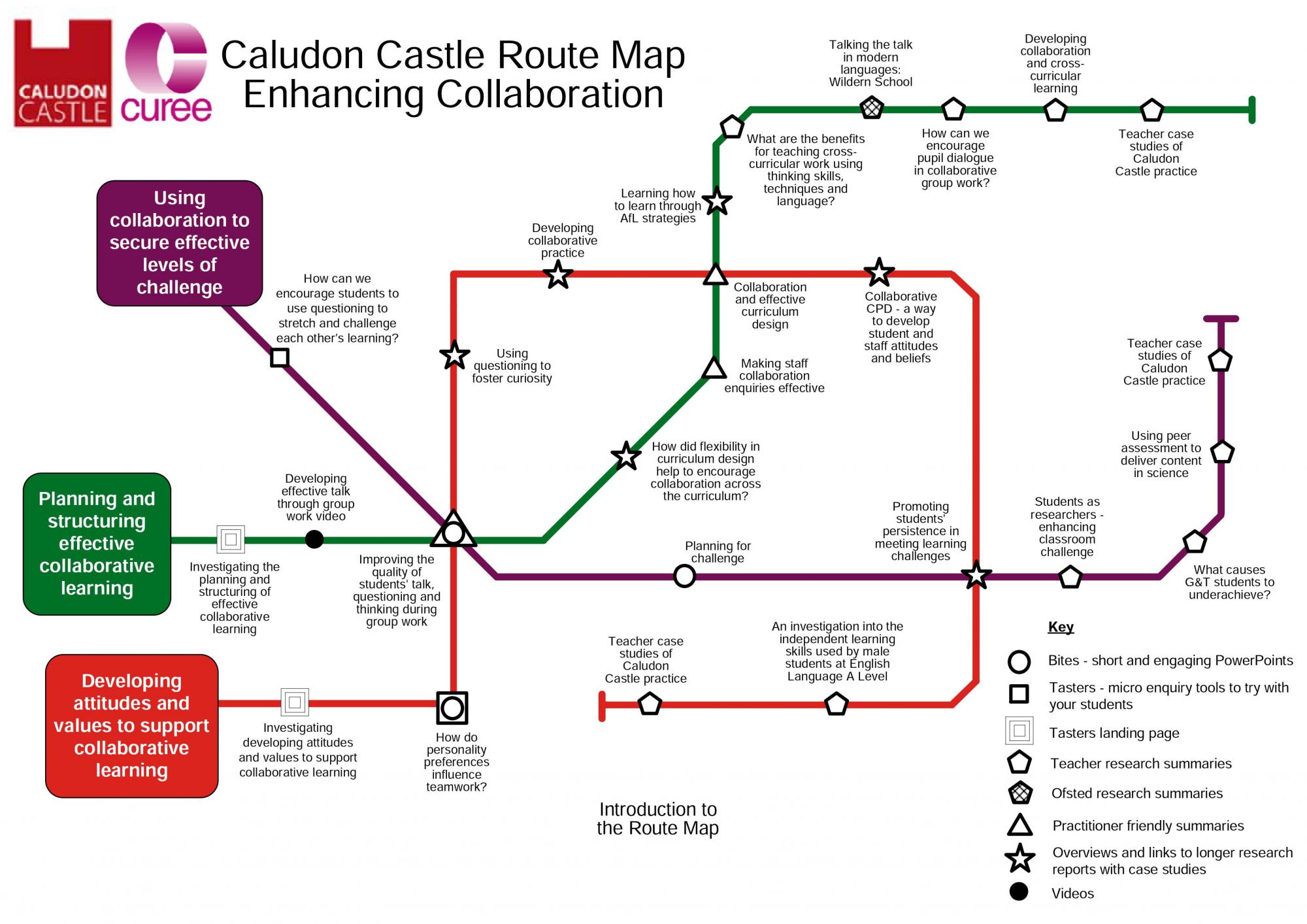Welcome to our latest newsletter looking at the exciting ways schools engage with Research and Evidence!
This month we are looking at Caludon Castle School in Coventry, where they have integrated a Route Map on enhancing collaboration into their CPD provision (download a print-friendly pdf version here).
Starting Point
Caludon Castle wanted to strengthen collaboration and peer relationships within the school. These relationships were between students, students and teachers, and teachers. Based in Coventry, the comprehensive school with a sixth form has over 1500 students. Ann Rayns, Deputy Head Teacher, led a project to engage colleagues in using and carrying out research about effective collaboration. The school asked CUREE to develop a bespoke Route Map to support the project. This was co-constructed with key colleagues and enabled the teachers to access and use robust evidence about collaboration in user friendly resources. The teachers’ own research projects were then incorporated as case studies on the Route Map.
As Caludon Castle use staff peer coaching on a regular basis, having a “one-stop shop” for research relevant to Caludon Castle that can be used in the coaching sessions has helped get staff further engaged in professional development and reflection.
What They Did
All teachers across the school engaged with the Route Map through a CUREE facilitated carousel session where colleagues who had been involved in carrying out case studies shared what they had learnt about developing collaboration with their students. Teachers could move to different tables to hear about different case studies. At this time Caludon Castle had a large group of NQTs with an interest in action research. Kees de Groot, Assistant Principal Leader of Learning, initiated a Professional Enquiry Group (PEG) which used the Route Map to support the new teachers in their work. This has been further developed by Kees into a Professional Enquiry Project (PEP) model in which every member of staff participates in a research project every year, with the original Route Map used as a basis for informing and supporting the research.
 There was a desire amongst staff to bring in outside expertise/knowledge which they could be certain was robust and CUREE bridged the gap between academic research and formalising what takes place in school.
There was a desire amongst staff to bring in outside expertise/knowledge which they could be certain was robust and CUREE bridged the gap between academic research and formalising what takes place in school.
Impact
The teachers that were involved with the early stages of liaising with CUREE believe that “the process of being involved in creating the Route Map with CUREE is as valuable as the Route Map itself”. The colleagues involved can all see a visible change, observed in Learning Walks, in terms of the approach teachers have to their lessons to setting up learning experiences which engage students in effective collaboration. The aim of the Route Map was first and foremost to promote collaborative learning between students, and colleagues feel that from their experience so far, it has made a big impact on what staff are doing in the planning and delivery of lessons. The Route Map has been integrated into Caludon Castle’s overall approach to CPD. Staff have been fully engaged in the research and enquiry and many people have gone well beyond what was expected of them.
"…the process of being involved in creating the Route Map with CUREE is as valuable as the Route Map itself”
Student Research
A significant impact that has emerged from the Route Map is the use of student research leaders at Caludon Castle. They have become an integral aspect of the action research projects and have acted as ‘assistant researchers’ to teachers. Overall, student leaders believed that being involved in the project contributed to their own development and they all noticed a definite change in how teachers and their peers think and talk.
